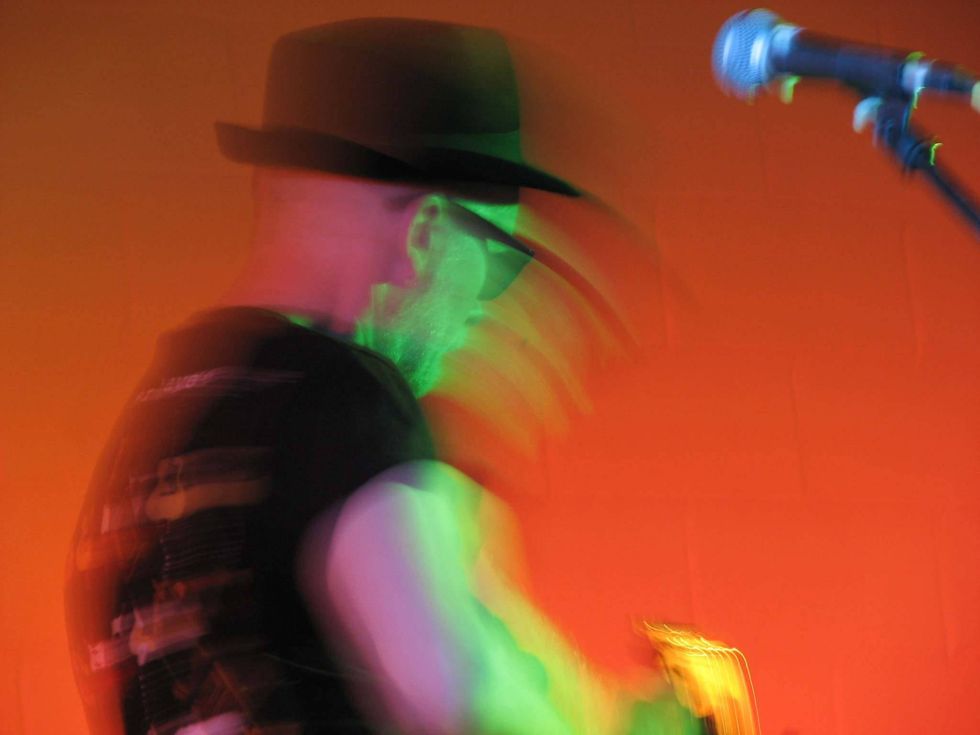Pickups and pots. For me, the name of the game when it comes to pickups is not too hot. Hot single-coil pickups can work okay for clean sounds, but I prefer medium-output single-coils—especially with Strat-style pickups—because they will generally have more clarity. Wind them too hot, and they become what I call “mid bombs." (It's worth noting that because of their design, Tele-style bridge pickups can generally be wound relatively hot without sacrificing top end.)
Likewise, I find that hot humbuckers will be all midrange without enough top end. They have a tendency to overdrive the front end of most amps, which makes it really hard to play truly clean. If cleans with clarity are important to you, I suggest sticking with humbucking pickups that are under 10k ohms.
If your humbucking clean tones seem dark, be sure to check your volume and tone pots. New Gibsons sometimes ship with 300k pots, and these can dull your tone. With humbuckers, you'll want pots rated at 500k. Also, while rolling down your guitar volume will clean up the tone, this can also dull the top end—even with high-quality 500k pots. If you'd like to roll down your guitar volume and still retain lots of chime and clarity, you can experiment by adding a treble-bleed circuit, which consists of a capacitor and resistor soldered between the input and output of your volume pot(s). A Les Paul with a treble-bleed circuit on just the neck pickup's volume pot can be a versatile axe. With an overdriven amp, you can set the neck's volume on 1 or 2, dime the bridge pickup, and then simply flip the pickup switch for clean to dirty. No channel switching required!
Amps and tubes. Fender-style amps have always been considered the benchmark for terrific clean sounds, but British amps can achieve great cleans too. The classic Marshall JCM800 amp, renowned for its rocking overdrive tones, is a sleeper clean-amp as well. If you've never tried plugging into the low input of a JCM800, you're in for a nice surprise. The reduced gain of the low input provides plenty of headroom for clean tones, with just a little breakup on tap at the highest preamp-gain settings. And you can always step on a fuzz or overdrive pedal for gain sounds. In fact, Billy Corgan used a KT88-equipped JCM800 in this fashion for his classic tones on Gish and Siamese Dream.
Many amp manufacturers use JJ ECC83 (12AX7) tubes in the V1 preamp-tube position. They tend to be quite reliable and have low microphonics and noise. But, arguably, they can sound a bit dark and dull, and this can make for an uninspiring clean tone. It's a quick and easy experiment to try replacing this tube with a new Tung-Sol or Shuguang 12AX7 for more sparkle and extended top end. It might really breathe some life into your clean tone.
Speakers. If your cleans are sounding lackluster, consider a speaker swap before you buy a new amp or cab. While I love the classic Celestion Greenback and its small 35-ounce magnet for overdrive tones, I much prefer the G12H types and their heavier 50-ounce magnet when going for cleans with a 12" British-style ceramic speaker. They produce more robust lows and extended top-end—perfect for full-frequency clean tones. (Jimi Hendrix used the 55 Hz bass-cone version of this speaker.) When talking clean tone, I'd be remiss to not mention the classic EVM12L speakers with their heavy magnets and massive 200 watts of power handling. Stevie Ray Vaughan used EVM speakers and John Mayer recently told me that he really digs them too.
Enhancing cleans with subtle compression. A good compressor can “pump up" your tone, giving you some of the same feel as when you are playing with drive—even when your amp is set totally clean. They help keep your guitar full and present (when set correctly), even in a dense mix. Many stompbox compressors on the market today feature a mix control, which allows you to blend the compressed signal with your dry guitar sound. This makes it easy to retain punch, attack, and dynamics while boosting quieter sounds and adding sustain. My general goal with a compressor is to set it so it enhances my core guitar tone, without making the resulting sound too obviously compressed. I set compressors so I don't notice them too much when they are on, but I really miss them when they are off.
I hope some of these tips will help you achieve your ultimate clean tone. Until next month, I wish you great tone!










![Rig Rundown: Russian Circles’ Mike Sullivan [2025]](https://www.premierguitar.com/media-library/youtube.jpg?id=62303631&width=1245&height=700&quality=70&coordinates=0%2C0%2C0%2C0)








